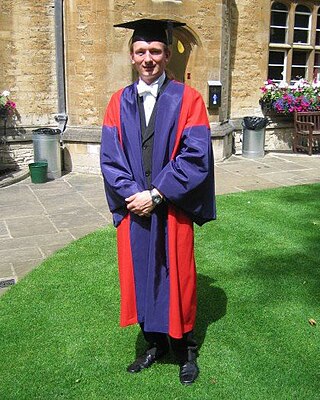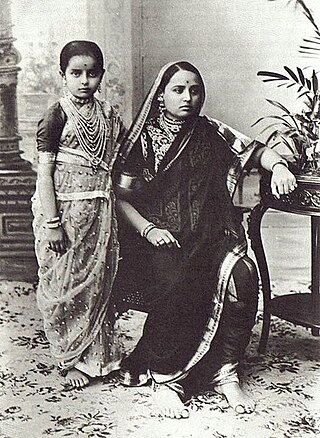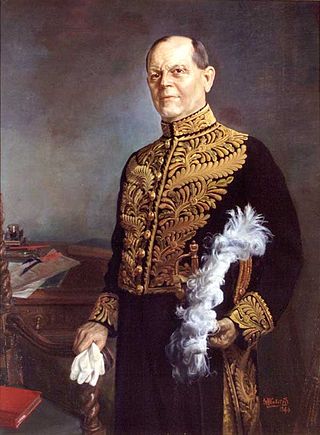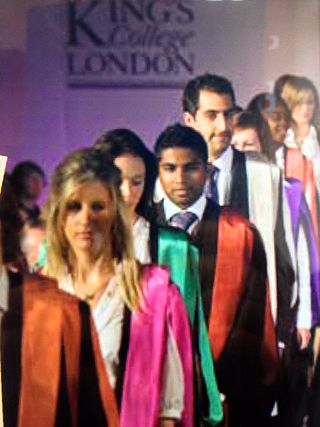
Mysore, officially Mysuru, is a metropolitan city in the southern Indian state of Karnataka. It is the third-most populous and third-largest city in the state, and is one of the cleanest cities in India. It is the seat of the Wadiyar dynasty and was the capital of the Kingdom of Mysore for almost six centuries, from 1399 until 1947. It is currently the headquarters of Mysore district and Mysore division. Known for its heritage structures and palaces, including the famous Mysore Palace, and noted for its culture, Mysore is popularly known as the "City of Palaces", the "Heritage City", and the "Cultural Capital of Karnataka". For its pristine and calm ambience, it is also known as "Pensioners' Paradise".

A turban is a type of headwear based on cloth winding. Featuring many variations, it is worn as customary headwear by people of various cultures. Communities with prominent turban-wearing traditions can be found in the Indian subcontinent, Southeast Asia, the Arabian Peninsula, the Middle East, the Balkans, the Caucasus, Central Asia, North Africa, West Africa, East Africa, and amongst some Turkic peoples in Russia as well as Ashkenazi Jews.

The fez, also called tarboosh/tarboush, is a felt headdress in the shape of a short cylindrical, truncated (peakless) hat, usually red, and sometimes with a black tassel attached to the top. The name "fez" refers to the Moroccan city of Fez, where the dye to color the hat was extracted from crimson berries. However, its origins are disputed.

Academic dress is a traditional form of clothing for academic settings, mainly tertiary education, worn mainly by those who have obtained a university degree, or hold a status that entitles them to assume them. It is also known as academical dress, academicals, and, in the United States, as academic regalia.

The University of Oxford has a long tradition of academic dress, which continues to the present day.

A sari is a women's garment from the Indian subcontinent, that consists of an un-stitched stretch of woven fabric arranged over the body as a robe, with one end tied to the waist, while the other end rests over one shoulder as a stole (shawl), sometimes baring a part of the midriff. It may vary from 4.1 to 8.2 metres in length, and 60 to 120 centimetres in breadth, and is form of ethnic wear in India, Pakistan, Bangladesh, Sri Lanka and Nepal. There are various names and styles of sari manufacture and draping, the most common being the Nivi style. The sari is worn with a fitted bodice commonly called a choli and a petticoat called ghagra, parkar, or ul-pavadai. It remains fashionable in the Indian Subcontinent today.

A wedding dress or bridal gown is the dress worn by the bride during a wedding ceremony. The color, style and ceremonial importance of the gown can depend on the religion and culture of the wedding participants. In Western cultures and Anglo-Saxon cultural spheres, the wedding dress is most commonly white, a fashion made popular by Queen Victoria when she married in 1840. In Eastern cultures, brides often choose red to symbolize auspiciousness.
Clothing in India is dependent upon the different ethnicities, geography, climate, and cultural traditions of the people of each region of India. Historically, male and female clothing has evolved from simple garments like kaupina, langota, achkan, lungi, sari, well as rituals and dance performances. In urban areas, western clothing is common and uniformly worn by people of all social levels. India also has a great diversity in terms of weaves, fibers, colours, and material of clothing. Sometimes, color codes are followed in clothing based on the religion and ritual concerned. The clothing in India also encompasses the wide variety of Indian embroidery, prints, handwork, embellishment, styles of wearing clothes. A wide mix of Indian traditional clothing and western styles can be seen in India.

Court uniform and dress were required to be worn by those in attendance at the royal court in the 19th and early 20th centuries.
Academic dress at the University of St Andrews involves students wearing distinctive academic gowns whilst studying at the University of St Andrews. Undergraduate gowns in Scotland were once common at all the ancient universities of Scotland, with each having its own distinctive style. St Andrews undergraduates wear either a scarlet gown if they are part of the United College and studying in the Faculties of Arts, Medicine and Science, or a black gown if they are part of St Mary's College and studying in the Faculty of Divinity.

Mysore Dasara is the Nadahabba of the state of Karnataka in India. It is a 10-day festival, starting with nine nights called Navaratri and the last day being Vijayadashami. The festival is observed on the tenth day in the Hindu calendar month of Ashvina, which typically falls in the Gregorian months of September and October.

Pakaian is the term for clothing in Malaysia's national language. It is referring to things to wear such as shirts, pants, shoes etc. Since Malaysia is a multicultural nation: Malay, Chinese, Indian and hundreds of other indigenous groups of Malay peninsula and Borneo, each has its own traditional and religious articles of clothing all of which are gender-specific and may be adapted to local influences and conditions. Previously, traditional clothes were worn daily. However, by excluding Baju Melayu, Baju Kurung many are now only worn on special occasions such as marriage ceremonies and cultural events.

The Taqiyah or araqchin is a short, rounded skullcap. It is often worn for cultural or religious purposes; for example, some Muslims believe that the Islamic prophet Muhammad used to keep his head covered, therefore making it mustahabb. Muslim men often wear them during the daily prayers.

Academic dress prescribed at the University of Dublin and its sole constituent college, Trinity College, follows a relatively complex protocol which, nonetheless, shares some particular characteristics with other universities in Ireland and with the University of Oxford in the United Kingdom.
Pheta, also known as pataka, is a traditional turban worn in Maharashtra, India.
Pagri, sometimes also transliterated as pagari, is the term for turban used in the Indian subcontinent. It specifically refers to a headdress that is worn by men and women, which needs to be manually tied. Other names include sapho.

Headgear, headwear, or headdress includes any element of clothing which is worn on one's head, including hats, helmets, turbans and many other types. Headgear is worn for many purposes, including protection against the elements, decoration, or for religious or cultural reasons, including social conventions.

The academic dress of the United Kingdom and Ireland has a long history and has influenced the academic dress of America and beyond. The academic square cap was invented in the UK as well as the hood which developed from the lay dress of the medieval period.

An arakhchi (Armenian: արախչի, romanized: arakhchi, is a traditional Armenian hat that was also worn by the Azeri Turks, made from specially woven silks, that is the most persistent of traditional garments, sometimes worn over a low flat topped skullcap, almost covered with gold embroidery, or alternatively a small bonnet .}}</ref> flat top skull cap headdress, worn by both men and women in the past.

Mughal clothing refers to clothing developed by the Mughals in the 16th, 17th and 18th centuries throughout the extent of their empire in the Indian subcontinent. It was characterized by luxurious styles and was made with muslin, silk, velvet and brocade. Elaborate patterns including dots, checks, and waves were used with colors from various dyes including cochineal, sulfate of iron, sulfate of copper and sulfate of antimony were used.





















